Circuit Calculations
Introduction
⇒ Electronic engineers also need to know the simple ways that current and potential difference act in circuits
⇒ The 'rules' for these are universal and apply to simple circuits as well as the intricate circuits found in integrated circuit chips
⇒ These simple rules were first worked out by a German physicist called Gustav Kirchoff in 1845 and have become known as Kirchoff's First and Second Circuit Laws
Kirchoff's First Circuit Law - the law of current
⇒ At a circuit junction, the sum of the currents flowing into the junction equals the sum of the currents flowing out of the junction
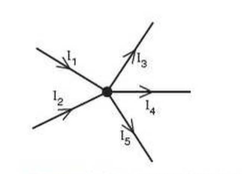
⇒ This shows a circuit junction with two currents with two currents (I1 and I2) flowing into the junction and three currents flowing out of the junction (I3, I4 and I5)
⇒ Kirchoff's First Circuit Law states: I1 + I2 = I3 + I4 + I5
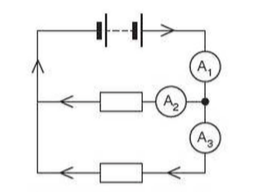
⇒ Conventional current flows from positive to negative, so the current flowing into the junction is measured by ammeter A1
⇒ Current splits or recombines at a junction, so the current flowing out of the junction is measured by A2 and A3
- Kirchoff's First Circuit Law tells you that: A1 = A2 + A3
⇒ Written more generally in mathematical notation the law can be summarised by:

⇒ Or, in other words, current is conserved at junctions
⇒ Looked at from a slightly different persepctive, as current is the rate of flow of charge (I = Q/t) then Kirchoff's First Circuit Law could be written in terms of charge: At a circuit junction, the sum of the charge flowing into the junction equals the sum of the charge flowing out of the junction (per second)
Kirchoff's Second Circuit Law - the law of voltage
⇒ In a closed circuit loop, the sum of the potential differences is equal to the sum of the electromotive forces
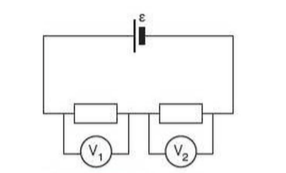
⇒ This shows a single closed loop series circuit. In this case, there is one emf and two pds, and Kirchoff's second law states that: ε = V1 + V2
⇒ Or more generally, using mathematical notation, for any closed circuit loop: Σ ε = Σ V

⇒ If the circuit is extended to make a parallel circuit, this parallel circuit is effectively made up of two series circuits: ABCD and AEFD, so:
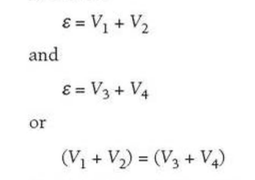
⇒ Kirchoff's second circuit law applies to any circuit, but in the case of parallel circuits, the circuit must be considered as a succession of individual series circuits with the same power supply
- This law is based on the conservation of energy: the energy per coulomb transferred to the charge by the battery, ε, is then transferred to other forms of energy by the charge as it flows through the circuit components
Batteries and cells
⇒ The standard AA battery is a common batery for a number of devices
⇒ The word battery is actually a misnomer: the AA batteries you put in devices are actually cells and several cells joined in series or parallel are called a battery
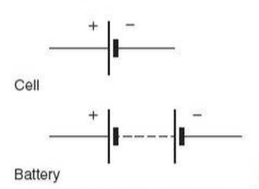
⇒ When identical cells are connected in parallel to form a battery, the emf of the resultant battery is just the emf of the individual cells
- Connecting cells in parallel is generally not a good idea as they are rarely identical, and one cell will force current back into the other, causing damage to the cells
- Cells in parallel have a higher capacity for storing and transferring electrical energy than single cells, but it is better to just buy and use a bigger single cell
Extra
⇒ Also see our notes on: